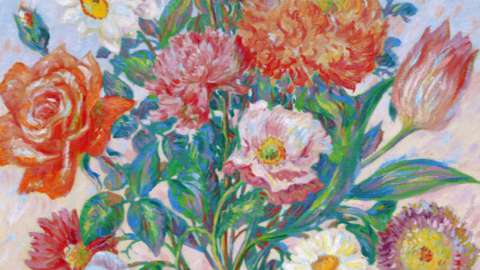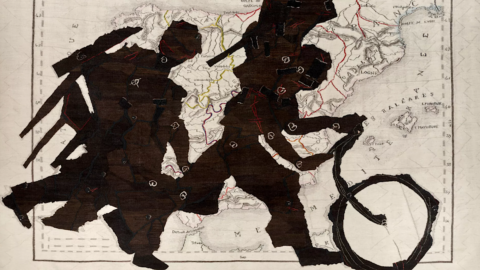Paris today seems like a sleepy city with silent corners, cafes that don't open to guests, deserted streets, empty shops, galleries and museums without lights. Some florists give the beauty of a smile as they place the buckets full of roses, tulips and Christmas decorations in their outdoor space, even if this is not Christmas ever.
Walking through Montmartre helps us immerse ourselves in the hope that 2021 will bring us back to normal with a new maturity to be better and thus be able to appreciate life with humility and greater respect for everything around us. And it will be precisely art, which has been taken away from us in this period, that will play a significant role in the post-pandemic recovery, because its natural beauty will always remain immutable over time.
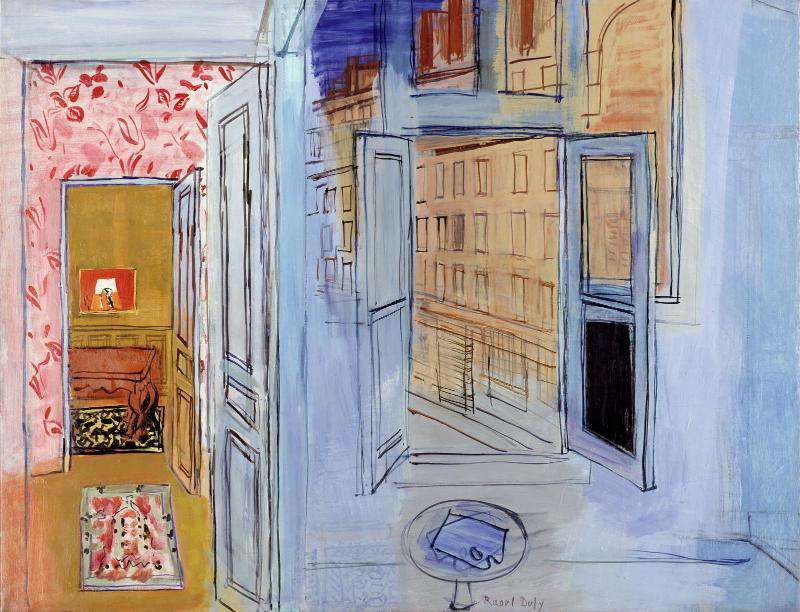
Some exhibitions have been "scheduled" for the spring, which I would like to point out. From 5 March to 12 September we could visit an exhibition by Raoul Dufy at the Musée Montmartre, draftsman, decorator and designer alternately of fabrics and furniture, but above all the author of an eclectic work, full of life and imagination. The exhibition retraces the footsteps of this young Norman artist who, after getting off the train at the Gare Saint-Lazare, discovers the capital at the beginning of the 12th century and, from the top of the Butte Montmartre, the Parisian panorama whose landscape bristles with the monuments they will not leave him until his death. The exhibition focuses on the particularity of his way of representing the city and brings together the Parisian works of Dufy. It pays homage to this artist who occupied one of the studios at 1911 rue Cortot – where the Montmartre Museum is now located. From 5 he opened his own studio a stone's throw from the museum at XNUMX impasse de Guelma, which will remain his anchor point in Paris throughout his life.
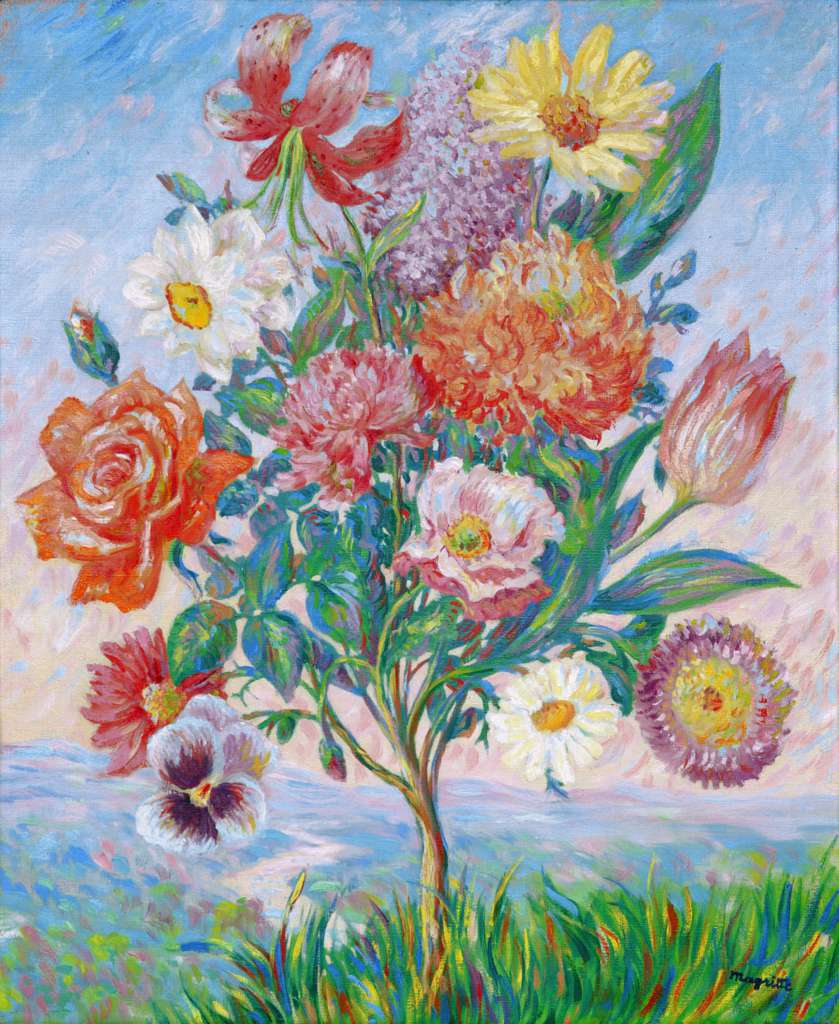
The Orsay and Orangerie museums are organizing an exhibition dedicated to René Magritte's "Renoir Period", from 10 February to 21 June 2021. It will be the first exhibition to show in full a chapter of Magritte's work still largely unknown, it allows you to compare Magritte's works with those of Auguste Renoir from which he is inspired.
Convinced that the defeat of the German troops in Stalingrad heralds the definitive defeat of Nazi Germany and the imminent end of the world war, Magritte sees himself as a prophet of happiness and rediscovered peace: "... the positive side of life would be the area I would have explored. By that I mean all the traditional paraphernalia of charming things, women, flowers, birds, trees, the mood of happiness. Etc… it is a rather powerful allure which now replaces in my paintings the haunting poetry which I had once striven for.” wrote Magritte to Paul Éluard in 1941.
Magritte remained faithful to this "solar" style until 1947 and produced about fifty paintings, as many gouaches and a considerable number of drawings - illustrating Sade, G. Bataille, Éluard and Lautréamont. Far from considering it a "passage", Magritte attaches enough importance to his "Renoir Period" to make it the basis of a project for the profound reform of Surrealism. To this end, in October 1946 he sent André Breton his “Manifesto for a surrealism in the sun”. The end of the inadmissibility that André Breton opposes to this program of renewal of surrealism led Magritte to “liquidate” the “Renoir Period” in a provocative and cynical fireworks display which took the form, in 1948, of his “Cow Period ”.
The exhibition brings together around sixty paintings and around forty drawings. It opens with some works from the late thirties in which Magritte expresses the imminence of war and disasters. Magritte's "Renoir" period paintings are compared with Renoir's masterpieces, contemporary paintings by Picabia and other pieces, notably by Jeff Koons, which allow us to sketch a posterity of this output. little known.
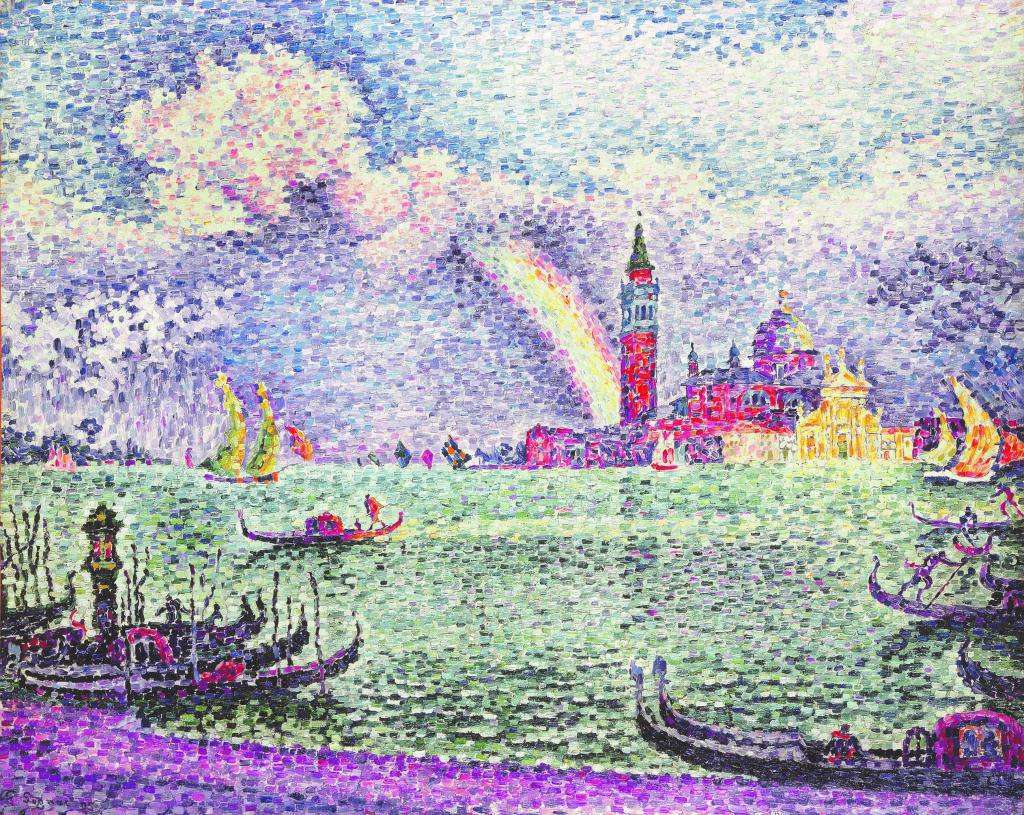
The Jacquemart-André museum will honor the work of Paul Signac (5-19) with an exhibition from March 1863 to June 1935, master of the landscape and main theorist of divisionism, through about sixty works from an exceptional private collection. Alongside 25 of his paintings such as Avant du Tub (1888), Saint-Briac, Les Balises (1890), Saint-Tropez, l'orage (1895), Avignon, matin (1909) or Juan-les-Pins Soir (1914 ) and a dozen watercolours, the exhibition will present more than twenty works by the artists Camille Pissarro, Maximilen Luce, Théo Van Rysselberghe, Henri-Edmond Cross, Georges Seurat, Louis Hayet, Achille Laugé, Georges Lacombe and Georges Lemmen. The entire exhibition will follow a chronological path, from the early impressionist paintings Signac painted under the influence of Claude Monet to the brightly colored works produced by the artist in the 1884th century, including his meeting with Georges Seurat in 1890. The exhibition, which will trace the life of Signac and his work in decomposition of color, will also revisit the history of neo-impressionism. At the beginning of the tour, the various players in the Neo-Impressionist movement will first be evoked by portraits (Portraits of Georges Seurat (1895), Camille Pissarro (1898), Henri-Edmond Cross (1890) by Maximilien Luce; Portrait of Maximilien Luce (1916) by Signac; Self-Portrait (1887) by Théo Van Rysselberghe …). Later in the exhibition, the canvases of neo-impressionist painters will then be brought together: Camille Pissarro, Louis Hayet, Achille Laugé … etc. and more particularly those of the most famous among them: Van Rysselbeghe, Cross and Luce. The visitor will be able to appreciate the different aspects of Neo-Impressionism, according to the interpretation of very different artistic personalities through works such as Au Café (1888-1888) by Louis Hayet, Briqueterie Delafolie à Eragny (1894) by Camille Pissarro, Le Moulin du Kalf in Knokke (1902) by Théo Van Rysselberghe or La Mer chapotante (circa 1905-1892) by Henri-Edmond Cross. An important section will be dedicated to Signac's early Neo-Impressionist works, then to the period in Saint-Tropez where he chose to spend the summer from 1913 to XNUMX. The works painted in Paris and Brittany will contrast with the strong-coloured paintings inspired by the South. The exhibition will illustrate the development of the painter's technique, which gradually freed itself from Seurat's theories to develop neo-impressionism in the direction of an ever more colorful pictorial expression. The museum will also present Signac's work in the XNUMXth century, when the artist produced numerous watercolours. An entire railing with a dozen leaves will be dedicated to them. A fine collection of XNUMXth century paintings will underline the importance of Signac's pictorial style, which plays on the contrast of colors that he combines in the form of small touches. An innovative artist, Signac paved the way for his contemporaries and a new generation of artists such as wild animals, futurists and abstract painters.
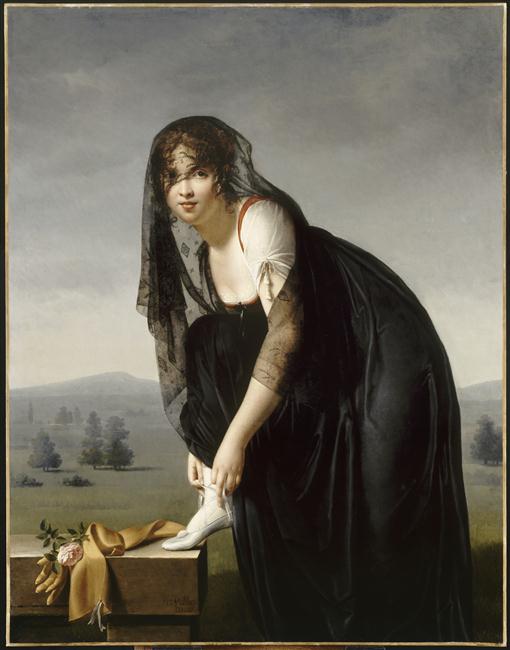
From 3 March to 4 July 2021, the Musée de Luxembourg hosts an exhibition dedicated to women entitled "Peintres Femmes 1780-1830". We readily believe that after Elisabeth Vigée Le Brun's glory linked to the Ancien Régime, it was not until the second half of the 1780th century to find such remarkable female painters. However, it was between 1830 and XNUMX that the struggle of the latter found its roots: the right to education, professionalisation, public existence and a place in the art market. The female artists presented at the Musée du Luxembourg on the occasion of this exhibition were both the protagonists of these social changes and of the mutations of nineteenth-century art.

